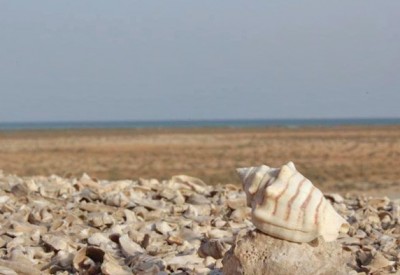New publications on the Farasan Shell Mounds

Two new DISPERSE papers on the coastal ecology of the Farasan Islands have recently been published
Seasonal Patterns of Coastal Exploitation on the Farasan Islands, Saudi Arabia published in Journal of Island and Coastal Archaeology is based on a very substantial number of stable isotope values (n=862) collected from archaeological specimens of the marine gastropod Conomurex fasciatus to determine the intensity and continuity of coastal exploitation on the Farasan Islands. The results show a clear seasonal signal with a concentration of shellgathering in the summer season but with continued exploitation at other times of year. For the first time, it is possible from these results to demonstrate year-round habitation of the islands rather than seasonal visits; the Islands' marine richness provided dependable food sources that were not restricted by the seasonal aridity of the Arabian coastline.
Exploring Accumulation Rates of Shell Deposits Through Seasonality Data in Journal of Archaeological Method and Theory exemplifies the use of stable isotope values in marine shells to provide a seasonal proxy for human occupation. Given sufficient numbers of isotope measurements, the results can provide a very high resolution chronology well beyond the resolution of radiocarbon dating. In this case they show that stratified layers of shells accumulated in successive seasons. The results shed new light on the formation processes associated with shell middens and demonstrate that substantial mounded accumulations of shell can build up in a matter of years, creating a visible archaeological signature of coastal occupation even on shorelines that are subject to lateral changes, as on the Farasan Islands, because of rapid changes in relative sea level.






